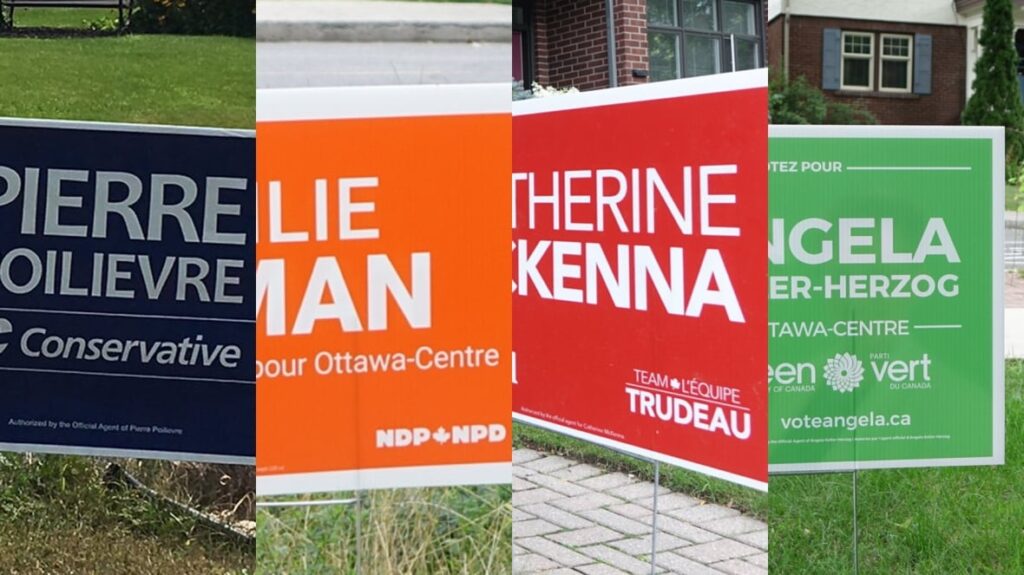As election campaigns ramp up, communities across Canada become dotted with campaign signs. These signs, a long-standing fixture in political races, are meant to increase name recognition, show support, and create a sense of momentum. But as campaigns evolve and voters become more digitally engaged, many are questioning whether election signs still hold any real influence.
Do Signs Actually Sway Voters?
Research into the impact of campaign signs suggests their influence is minimal but not entirely negligible. A study published in the Canadian Journal of Political Science found that political lawn signs can increase a candidate’s vote share by roughly 0.9 percentage points—a modest bump that may matter in tight races. However, signs alone don’t appear to boost overall voter turnout or significantly change voting intentions.
For example, in the 2018 Toronto municipal election, where signs were prevalent across the city, voter turnout sat at just 41%. This suggests that visibility alone may not be enough to drive civic participation.
Environmental and Safety Concerns
Beyond questions of effectiveness, campaign signs have come under scrutiny for their environmental footprint. Many are made from non-recyclable materials such as coroplast (corrugated plastic), which often ends up in landfills. Even when signs are removed promptly, disposal and reuse remain issues.
There are also safety concerns. In cities like Montreal, poorly placed signs have been flagged as hazards for pedestrians, particularly those with visual impairments. These risks have prompted some calls for stricter regulations or better enforcement.
Are There Better Ways to Campaign?
Some municipalities have begun limiting or even banning the use of election signs in public spaces, citing environmental concerns and visual clutter. For instance, Brampton, Ontario, passed a bylaw prohibiting election signs on city property.
At the same time, political campaigns are increasingly turning to digital platforms, canvassing, and community events to connect with voters. These methods are often more cost-effective and offer opportunities for two-way engagement—something a roadside sign can’t provide.
A Tradition Ready for Change?
While signs remain a visible and symbolic part of elections, their practical impact may be more about brand recognition than persuasion. In an age of data-driven campaigning and digital outreach, the role of traditional signage is likely to continue declining.
That said, in close races or rural areas where face-to-face campaigning may be limited, signs might still play a small but useful role. But for many voters and candidates alike, it’s time to reconsider whether those plastic placards are worth the cost—to both the environment and the democratic process.

